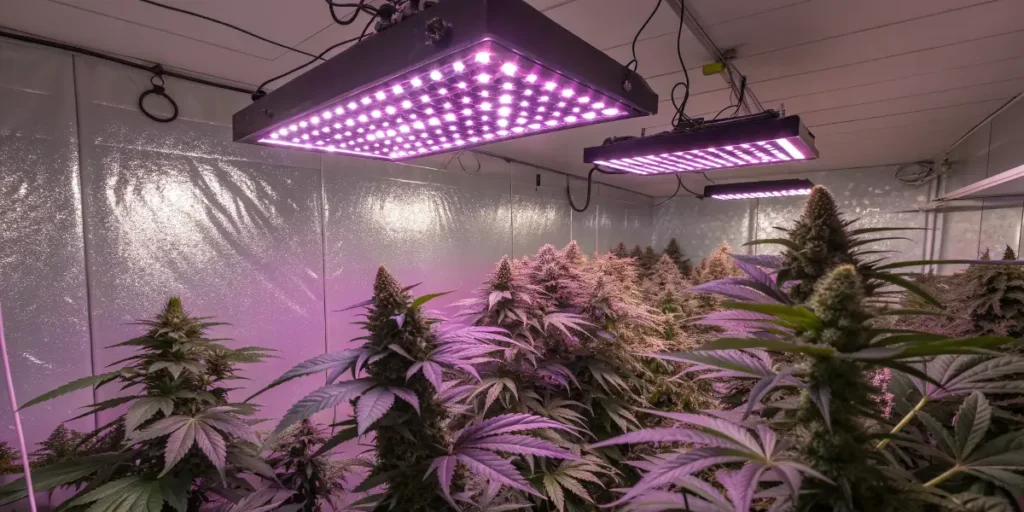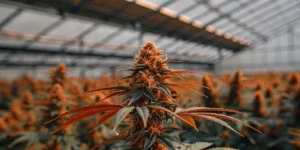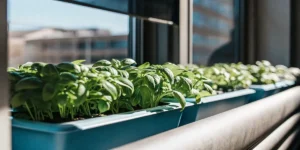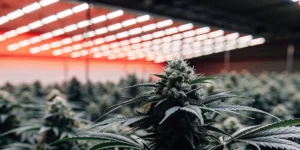Purple Lemonade is a remarkable strain that has captured the attention of cannabis aficionados for its stunning purple hues and refreshing lemonade-like flavor. This guide will provide you with detailed, step-by-step instructions on cultivating this eye-catching and tasty strain. Purple Lemonade is an autoflowering strain, which makes it a perfect choice for both novice growers and experienced cultivators looking for a low-maintenance plant that still delivers high-quality buds.
To start, ensure you have the essential materials and a controlled growing environment. Purple Lemonade thrives in both indoor and outdoor settings. It prefers a consistent temperature ranging from 20°C to 26°C (68°F to 80°F). If growing indoors, you will need a grow tent, full-spectrum LED lights, and adequate ventilation to mimic the outdoor conditions. Quality soil is crucial, so select a substrate rich in nutrients or consider a premixed organic potting soil designed specifically for cannabis.
Once your growing setup is ready, begin the germination process. Autoflowering seeds like Purple Lemonade should first be soaked in water for 12-24 hours until they split open, indicating readiness for planting. Following this, transfer the seeds into soil-filled pots and lightly cover them, ensuring they are exposed to light and kept moist. Germination typically occurs over the course of 3 to 5 days. Once seedlings appear, maintain a consistent light cycle of 18 to 20 hours per day for optimal growth.
As your plants develop, proper nutrition is vital for the health and color of the Purple Lemonade buds. A balanced diet rich in nitrogen, phosphorus, and potassium will encourage strong growth. Autoflowering strains are prone to nutrient burn, so start with a reduced feeding schedule and gradually increase it if plants show no signs of distress. Additionally, regular monitoring of pH levels is essential, with a range of 6.0 to 6.5 being ideal for soil-based cultivation.
During the flowering stage, which typically begins around week 4 or 5, keep a close eye on the humidity and temperature to prevent mold and mildew. Ideally, maintain humidity levels between 40% to 50% and slightly lower the temperature to bring out the vibrant purple coloration. As the buds mature over 8 to 10 weeks, you’ll notice the distinct coloration and trichome buildup that define Purple Lemonade. Harvest is typically ready when about 70% of the pistils have changed color and the trichomes appear milky with some amber hues.
Post-harvest, give ample time for drying and curing to fully enhance Purple Lemonade’s flavors. Dry your cannabis slowly in a dark, cool space at around 50% humidity. After the initial dry, cure the buds in airtight jars, opening them daily to release moisture for the first couple of weeks. This process will improve the smoothness of the smoke and intensify the unique lemonade aroma. Following this guide will ensure a rewarding experience with this stunning strain, yielding a vibrant, aromatic harvest.
Purple lemonade Strain Overview: Traits, Effects & Genetics
Purple Lemonade is a unique and vibrant cannabis strain known for its captivating appearance and impressive effects. This autoflowering variety is celebrated for its stunning deep purple hues, which stand out amongst the lush green foliage. Remarkably easy to grow, Purple Lemonade is suited for both novice and experienced cultivators, making it a popular choice in home gardens. Its balanced hybrid nature offers a combination of the best traits from both indica and sativa genetics, providing users with a comprehensive cannabis experience that is both invigorating and relaxing.
The aroma of Purple Lemonade is a delightful combination of sweet and tart citrus notes, reminiscent of freshly squeezed lemonade. Upon inhalation, the flavor profile is equally enchanting with a blend of zesty lemon and sweet berry undertones that lingers on the palate. Its unique terpene profile doesn’t just provide an enticing aroma and taste, but also enhances its effects, contributing to the strain’s popularity. This sensory appeal, coupled with its striking coloration, makes Purple Lemonade a standout in the world of cannabis.
Genetically, Purple Lemonade is a product of selective breeding, involving the crossing of purple and citrusy genetics to emphasize both flavor and potency. The result is a balanced hybrid that leans slightly towards the indica side, offering a soothing body high accompanied by a heightened sense of creativity and euphoria typical of sativa strains. The effects are long-lasting, starting with an uplifting cerebral high that gradually eases into a full-body relaxation without leaving you couch-locked, making it an ideal choice for various activities.
In relation to its effects, Purple Lemonade is particularly esteemed for its therapeutic benefits. It can be effective in alleviating symptoms of stress, depression, and mild pain, without overwhelming sedation, making it a versatile option for medical users. The mood-enhancing effects make it a favorite for social gatherings or when a mood lift is needed. Whether used recreationally or medicinally, Purple Lemonade offers an enjoyable encounter with its balanced effects suitable for day or night consumption.
Optimal Environment to Grow Purple Lemonade Successfully
Purple Lemonade is an exquisite strain that combines vibrant purple hues with a zesty citrus aroma, requiring specific environmental conditions to reach its full potential. This strain thrives in both indoor and outdoor settings, but optimal conditions need to be met to ensure successful cultivation. First and foremost, temperature control is paramount. Ideally, Purple Lemonade should be grown in a climate range of 21-26°C (70-80°F) during the light phase and slightly cooler temperatures of 18-24°C (65-75°F) during the dark phase. This temperature variance encourages the development of the strain’s signature purple hues, which emerge most vividly when exposed to cooler night-time temps.
Besides temperature, maintaining appropriate humidity levels is crucial for the growth of Purple Lemonade. During the vegetative stage, humidity levels should be kept between 40-60% to support vigorous growth. As the plants transition into the flowering stage, humidity should be gradually reduced to around 30-40% to prevent mold and mildew, which are more likely to occur in high humidity environments. Ensuring proper air circulation is also essential in preventing these issues. Using oscillating fans can help maintain airflow, minimizing the risks connected to stagnant air.
Light is another key factor in growing Purple Lemonade successfully. This strain requires 18-24 hours of light during the vegetative stage and about 12 hours during the flowering phase. Growers often favor full-spectrum LED grow lights for indoor cultivation as they provide the necessary wavelengths without producing excessive heat. Outdoors, Purple Lemonade grows best in areas with long, sunny days. Regardless of the setting, ensuring that light exposure is consistent will maximize the plant’s photosynthesis efficiency, promoting robust flowering and a stronger yield.
Lastly, maintaining soil quality and nutrient balance cannot be overlooked when cultivating Purple Lemonade. The use of nutrient-rich, well-draining soil with a slightly acidic pH of 6.0-6.5 is recommended. Incorporating organic matter like compost or worm castings can enhance soil fertility. During the vegetative stage, a higher nitrogen concentration supports healthy foliage, while phosphorus-rich nutrients are vital during flowering to enhance bud development. By carefully attending to these environmental factors, growers can ensure that their Purple Lemonade plants thrive, yielding abundant, high-quality buds with vibrant purple colors and exquisite flavors.
Grow Room Setup for Purple Lemonade Plants
When setting up a grow room for Purple Lemonade cannabis plants, the first aspect to consider is the space. Purple Lemonade plants typically require a moderate amount of space due to their bushy structure, so a grow tent with dimensions of at least 3′ x 3′ x 6′ is recommended. This size allows the plant to stretch adequately without being cramped. Moreover, a reflective interior, such as Mylar, is highly beneficial for maximizing light exposure, which is crucial for the healthy growth of these photogenic plants.
Lighting is another critical factor when setting up the grow room. Purple Lemonade thrives under full-spectrum LED grow lights, known for their energy efficiency and heat management. Full-spectrum lights mimic the natural sunlight, providing the necessary wavelengths during different growth stages. Aim for a light intensity of around 600-1000 PPFD (Photosynthetic Photon Flux Density) for optimal growth. A proper light setup ensures that the plants receive a balanced intensity necessary for photosynthesis and pigment production, enhancing the distinctive purple hues associated with Purple Lemonade.
Proper ventilation is essential in maintaining a stable growing environment for Purple Lemonade plants. Install an exhaust fan with a carbon filter to effectively manage the air exchange and control odors. The optimal airflow ensures that humidity levels remain between 40-60%, which is ideal for preventing mold and promoting vigorous plant health. Additionally, oscillating fans help in circulating air, strengthening the plant stems while preventing hotspots and stagnant air pockets that could lead to disease.
Temperature control is crucial for fostering Purple Lemonade’s unique characteristics. Keeping the grow room temperature between 70-80°F (21-27°C) during the day and slightly cooler at night supports healthy growth and encourages the development of purple pigmentation. Utilize digital hygrometers and thermostats to monitor and automate the climate control processes accurately, ensuring consistency. This steady temperature and humidity regulation will aid in maximizing cannabinoid and terpene profiles, enhancing both potency and flavor.
Indoor Growing Tips for Purple Lemonade
Purple Lemonade is an enticing variety of cannabis that combines the potent and flavorful attributes of both purple cannabis strains and lemony hybrids. When cultivating this strain indoors, it’s essential to recreate the optimal environment to help these plants reach their full potential. The compact size of Purple Lemonade makes it ideal for indoor cultivation, allowing growers with limited space to enjoy a bountiful harvest. Start by using soil or a hydroponic setup to provide a well-aerated medium, promoting stronger root development.
One crucial aspect of indoor cultivation for Purple Lemonade is maintaining proper lighting. This strain thrives under full-spectrum LED grow lights that mimic natural sunlight while operating efficiently. Depending upon your setup, a consistent 18/6 light cycle during the vegetative stage can enhance growth and vigor. Transition to a 12/12 cycle as you enter the flowering stage to stimulate bud formation. This lighting strategy not only supports its compact stature but also encourages vibrantly colored buds.
Temperature and humidity control play vital roles in cultivating Purple Lemonade. Aim to keep temperatures between 70-80°F (21-26°C) during the day and slightly cooler at night. This helps to mimic natural conditions and can bring out the purple hues. The relative humidity should be kept around 40-50% to prevent mold and pathogens, which can devastate your crop if left unchecked. Employing oscillating fans ensures adequate airflow, promoting healthy plant transpiration and strengthening plant stems.
Proper nutrient management is key for optimal Purple Lemonade growth. During its vegetative phase, introduce a nitrogen-rich fertilizer to facilitate robust foliage. Transition to a phosphorus and potassium-rich formula as the plant enters its flowering stage. This shift supports bud development and maximizes potency. Monitor pH levels between 6.0 and 6.5 to ensure proper nutrient uptake.
Finally, pruning and training techniques can greatly enhance yields and bud quality for Purple Lemonade. Low-stress training (LST) is highly recommended to increase light penetration to the lower branches, resulting in a more even canopy. Prune unnecessary leaves and shoots to focus the plant’s energy on producing dense, resinous buds. With patience and attentive care, indoor growers can achieve strikingly colorful and flavorful yields that reflect the unique genetic qualities of Purple Lemonade.
Outdoor Growing Tips for Purple Lemonade
Growing Purple Lemonade outdoors can be a rewarding experience, especially for those who appreciate the stunning visual and aromatic qualities this strain offers. One critical factor to consider when cultivating this strain outdoors is climate. Purple Lemonade thrives in warm, sunny environments, preferably with temperatures ranging between 70-80°F (21-27°C) during the day. It is important to monitor the night-time temperatures as well, ensuring they do not drop too significantly, which could stress the plants and affect growth. If you live in a cooler climate, consider using greenhouses or protective coverings to maintain an optimal temperature.
Soil quality is another essential aspect to focus on for successful outdoor cultivation. Purple Lemonade prefers nutrient-rich, well-aerated soil that retains moisture effectively but also ensures proper drainage. You can enhance your soil by mixing in organic compost or well-rotted manure to boost the nutrient content and improve overall soil health. Regularly monitor the pH level of the soil, keeping it slightly acidic, around 6.0 to 6.5, to support nutrient uptake. Incorporating perlite or vermiculite can also aid in preventing compaction and ensuring adequate drainage.
Proper spacing and positioning are pivotal when planting outdoors. Ensuring that your Purple Lemonade plants have sufficient space will facilitate air circulation, helping to prevent mold and mildew, common issues that could arise in a densely planted area. Aim to plant in a location where the plants can receive ample direct sunlight throughout the day. Regular pruning of lower branches and leaves also aids in improving airflow and directing the plant’s energy towards flowering, thereby enhancing the overall yield.
Watering routine plays a crucial role in the health of Purple Lemonade plants, particularly when growing outdoors. The watering frequency will depend on the climate and soil condition. Typically, Purple Lemonade will require more water during hotter periods to combat dehydration but be cautious of overwatering, which can lead to root rot and other issues. It’s essential to allow the top inch of soil to dry out between waterings, promoting deeper root growth and strengthening the plant’s resilience.
Lastly, pay attention to pest and disease management. Outdoor environments naturally expose Purple Lemonade to various pests, such as aphids, spider mites, and caterpillars. Employing natural pest control methods, like introducing beneficial insects or using organic pesticides, can help protect your crop. Regularly inspect the plants for any signs of disease or pest infestation to act promptly and ensure a healthy, bountiful harvest.
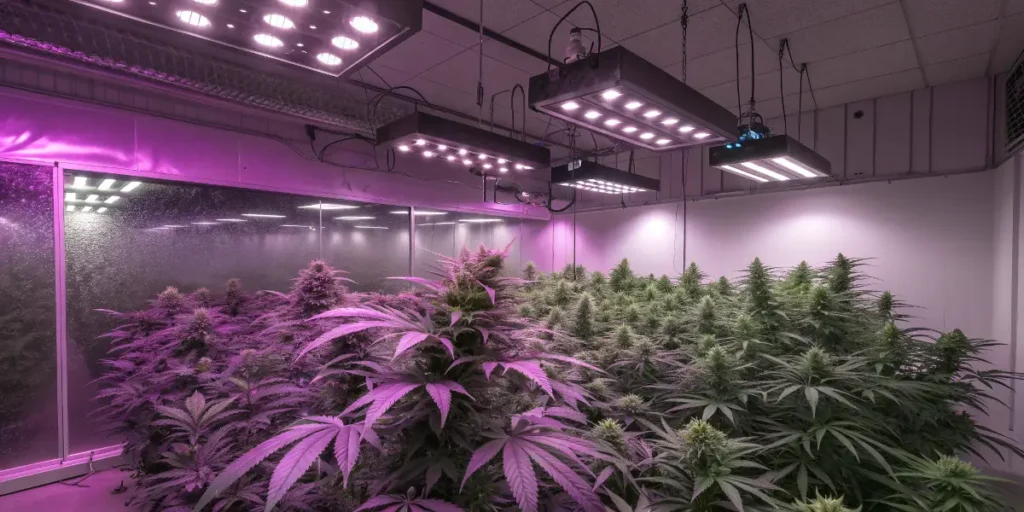
How to Germinate & Propagate Purple Lemonade
Germinating and propagating Purple Lemonade, a popular and visually stunning cannabis strain, begins with choosing high-quality seeds. Always procure seeds from reputable suppliers to ensure they have high viability and genetic consistency. Start by using the paper towel method, an easy and effective way to germinate seeds. Place the seeds between moist paper towels, ensuring they’re not drenched to avoid mold growth. Put the paper towels in a dark, warm place, around 70-85°F (21-29°C), and check daily to maintain moisture levels. Within 24 to 72 hours, you should notice tiny roots, known as radicles, emerging from the seeds.
Once the seeds have sprouted, they are ready for planting. Prepare a small pot or seedling tray with a high-quality seed-starting mix, which should be lightweight and provide good drainage. Make a small hole, about a quarter-inch deep, in the mix and place the germinated seed root down, gently covering it with the substrate. Provide a consistent environment with adequate warmth and humidity, ideally using a seedling dome. Ensure that the medium stays moist but not soaked, as overwatering can lead to issues such as root rot. The seedlings typically emerge in 3 to 7 days.
Once seedlings have developed a few sets of true leaves, it’s time to consider propagation if you’re aiming to maintain a steady supply of Purple Lemonade plants. Cloning is an effective method for propagation. Choose a healthy mother plant and take cuttings of about 4-6 inches in length, using sterilized scissors to minimize infection risks. Remove the lower leaves of the cuttings and dip the stem ends into a rooting hormone to promote root growth. Place the cuttings in a medium such as rock wool cubes, and keep them in a humid environment with sufficient light, checking daily for root development. Within 1 to 2 weeks, the cuttings should start developing roots, paving the way for a new generation of vibrant Purple Lemonade plants.
Throughout germination and propagation, maintaining the right environmental conditions is crucial. Optimal lighting, temperature, and humidity levels will not only support healthy growth but will also ensure the vibrant purple hues that the Purple Lemonade strain is famous for. Investing in a reliable thermometer and hygrometer can help in monitoring these conditions effectively. Remember, patience and attentive care are key elements to successful cannabis cultivation, and following these steps will ensure a thriving start for your Purple Lemonade journey.
Vegetative Stage
The vegetative stage is a critical phase in the growth cycle of Purple Lemonade plants, where the foundation for a healthy and productive flowering period is established. During this stage, your plants will focus on developing robust root systems and lush foliage. It’s essential to provide an environment that encourages vigorous growth, which includes maintaining optimal conditions in light, temperature, and humidity. Typically, the vegetative stage will last between 3 to 8 weeks depending on your cultivation goals and the growing environment established.
Light is one of the most crucial factors during the vegetative stage for Purple Lemonade plants. Ensure they receive at least 18-24 hours of light, often achieved using full-spectrum LED grow lights or high-output fluorescent lights. These lights should be positioned to cover the plant canopy evenly, allowing all parts of the plant to photosynthesize efficiently. Adjust the distance between the lights and the plants to prevent leaf burn and encourage steady growth.
Managing the nutrient intake is equally important during this stage. Purple Lemonade plants require a balanced intake of macronutrients, with an emphasis on nitrogen to support foliage growth. Utilize a high-quality vegetative-stage nutrient mix and monitor your plant’s responses to nutrient concentration carefully. Over-fertilization can lead to nutrient burn, while deficiencies may stunt growth; hence adjusting as per the plant’s signs is necessary for optimal development.
Temperature and humidity control are pivotal in the vegetative stage to enhance the Purple Lemonade’s growth potential. Maintain a temperature range between 70-85°F (21-29°C) during the day, with a slightly cooler environment at night to simulate natural conditions. Optimal humidity levels should reside around 40-60%. This minimizes stress and prevents issues such as mold or pests, which can derail your plant’s health.
Lastly, regular pruning and training techniques such as topping or low-stress training can be employed to optimize structure and future yield. These techniques encourage a bushier plant with multiple growth sites, leading to a higher yield potential during the flowering stage. Paying close attention to your Purple Lemonade plants during the vegetative stage sets the stage for a robust flowering phase and a successful harvest.
Flowering: What to Expect
Growing Purple Lemonade, a vibrant and visually striking strain, can be an incredibly rewarding experience for cannabis cultivators. As the name suggests, Purple Lemonade is renowned for its exquisite purple hues, which begin to manifest predominantly during the flowering stage. At this phase, expect a visually stunning transformation as the plant’s leaves and buds develop rich shades of purple, accompanied by occasional pink and magenta streaks. This unique coloration is not only aesthetically pleasing but also indicative of the plant’s genetic lineage, which includes a cross between sativa and indica strains renowned for their vivid colors and potent effects.
As you guide your Purple Lemonade through the flowering stage, anticipate a noticeable change in aroma. The scent is often characterized by a delightful blend of citrus and sweet undertones, reminiscent of freshly-squeezed lemonade. As the flowers develop, this aromatic profile becomes more pronounced, hinting at the flavorful experience that awaits. The smell serves as a precursor to the plant’s potential potency and flavor, both of which are further enhanced by the anthocyanins responsible for its purple coloration. Growers should prepare for this increase in odor by ensuring adequate ventilation and considering odor control measures if necessary.
During the flowering phase, Purple Lemonade typically requires a close eye on environmental variables to ensure optimal growth. It is crucial to maintain proper temperature and humidity levels, aiming for temperatures between 70-80°F (21-27°C) and humidity around 40-50%. These conditions encourage the healthy development of flowers and maximize resin production. Regular monitoring and adjustments are essential to prevent common issues such as mold and mildew, which can be more prevalent in colorful strains due to their dense buds. With the right care, Purple Lemonade will reward growers with a bountiful harvest filled with vibrancy and potency.
Additionally, Purple Lemonade’s flowering period is relatively short, often ranging from 8 to 10 weeks, making it an appealing option for those desiring a quick turnaround. As the plants approach full maturity, the thick, resin-coated buds will often take on a frosty appearance, further enhancing their appeal. Growers should be prepared for a moderate yield, with proper care and optimal conditions, expect an output of around 400-500g/m² indoors. This phase is enthralling as each day reveals more of the plant’s potential, promising both a magnificent visual and aromatic outcome.
Overall flowering Purple Lemonade is both a visual and olfactory delight that culminates in a gratifying harvest. With its unique coloration, citrusy aroma, and manageable growth cycle, growers can anticipate a rewarding experience. Ensuring optimal growing conditions will enhance the plant’s natural characteristics and produce a robust yield. As you cultivate this strain, embrace the transformation and look forward to the sublime rewards at the end of the flowering phase.
Fertilizers & Nutrient Schedule
Purple Lemonade, a unique strain known for its vibrant purple hues and zesty aroma, requires a meticulous feeding schedule to unleash its full potential. Understanding the nutritional needs during each stage of growth is crucial. During the vegetative stage, it’s essential to provide a balanced mix of nitrogen, phosphorus, and potassium (N-P-K). A 20-10-10 ratio is often recommended as it emphasizes nitrogen, which is vital for leaf development and overall plant growth. Additionally, consider incorporating calcium and magnesium supplements to prevent deficiencies that can affect growth.
As your Purple Lemonade transitions into the flowering phase, the nutrient requirements change. At this stage, reduce the nitrogen levels and increase phosphorus and potassium with a ratio of 10-20-20 or similar. These nutrients support bud development, enhancing the size and density of the flowers. Regular feeding, either through soil amendments or water-soluble fertilizers, should occur every week to ten days. Always ensure the plants are well-hydrated before applying nutrients, as this helps prevent nutrient burn, which can damage the delicate root system.
Monitoring the pH of your water and nutrient solution is critical for nutrient uptake. Purple Lemonade thrives in a slightly acidic to neutral pH range of 6.0 to 7.0. Consistently track the pH levels to ensure nutrients are available to the plant. It’s also advisable to flush the growing medium with plain water every couple of weeks to avoid nutrient buildup, which can lead to toxicity. Observing your plants closely will help you adjust the feeding schedule and nutrient concentrations as needed, ensuring a healthy and bountiful harvest.
Along with pre-mixed fertilizers, some growers prefer organic alternatives like compost tea or bat guano, which can provide a more diverse range of micro and macronutrients. Regardless of the method chosen, ensure all fertilizer inputs are high-quality and suitable for cannabis cultivation. Regularly inspect your Purple Lemonade for signs of nutrient deficiency or excess, such as discolored leaves or stunted growth, and adjust your feeding regimen accordingly. With patience and precision, your Purple Lemonade plants will thrive, producing stunning purple buds.
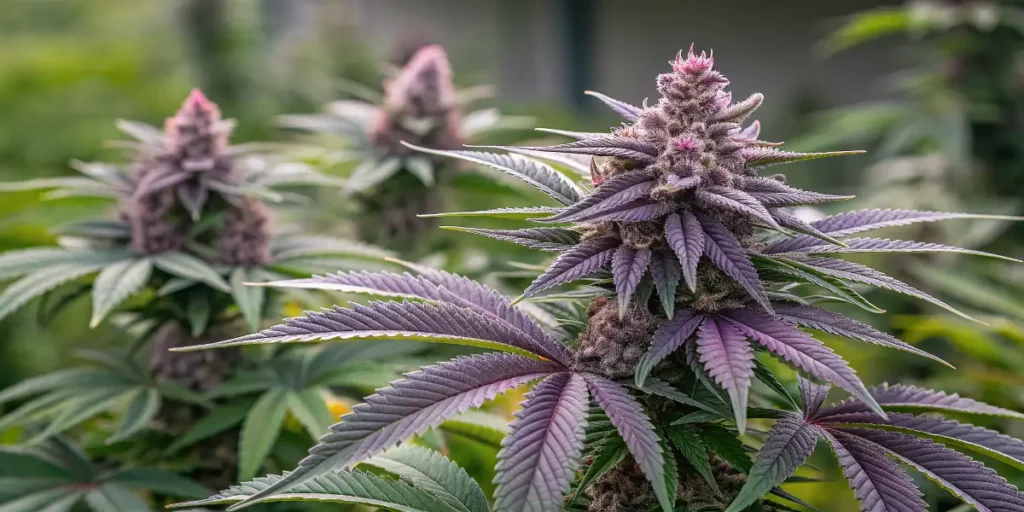
Pest and Disease Prevention for Healthy Cannabis Plants
Purple Lemonade, a popular strain among cannabis cultivators, offers unique challenges and opportunities when it comes to pest and disease prevention. Ensuring the health of your Purple Lemonade plants begins with maintaining an optimal growing environment. Key factors such as humidity, temperature, and ventilation play a crucial role in deterring pests and minimizing diseases. Keeping relative humidity between 40-60% and temperatures between 70-80°F (21-27°C) can help create an environment that is less hospitable to common cannabis pests and diseases.
Integrated pest management (IPM) strategies are essential for growing robust Purple Lemonade plants. IPM involves combining various control methods to manage pest populations effectively. Begin by conducting regular inspections of your plants to detect issues early. Look for signs of pest activity or disease symptoms, including discolored leaves or abnormal growth patterns. Employ natural predators, such as ladybugs or predatory mites, to control pest populations without resorting to chemical treatments that could adversely affect the plant’s growth or taste.
Another crucial aspect of pest and disease prevention for Purple Lemonade is maintaining plant hygiene. Remove dead or fallen foliage promptly, as these can serve as breeding grounds for pests and pathogens. Ensure tools and equipment are clean before use to minimize the risk of pathogen spread. Furthermore, it’s advisable to quarantine new plants or clones before introducing them to your main garden. Doing so can prevent the accidental introduction of pests or diseases into your grow space.
Biological and organic treatments offer alternative solutions for managing potential threats to your Purple Lemonade plants. Neem oil, insecticidal soaps, and diatomaceous earth are popular organic options that can aid in controlling pest populations without harming the plant or the environment. For disease prevention, consider using compost teas or beneficial fungi and bacteria that enhance the plant’s natural defenses. Consistently monitoring and applying these practices will help ensure the health and vitality of your Purple Lemonade crop.
Lastly, staying informed about the common pests and diseases that affect cannabis, such as spider mites, aphids, powdery mildew, and root rot, can enhance your ability to prevent and combat these issues effectively. Knowledge is power, and staying proactive about pest and disease prevention can lead to healthier, more productive Purple Lemonade plants. With diligence and the right techniques, growers can ensure their crops thrive throughout the growing season.
Harvesting & Drying Purple Lemonade the Right Way
Harvesting Purple Lemonade at the right time is crucial to maximize its potency and flavor profile. Typically, it’s ready to harvest between 8-10 weeks after the flowering stage begins. It’s essential to monitor the trichomes closely using a magnifying glass or jeweler’s loupe. Look for the transition of trichomes from clear to a milky white or amber hue. Milky trichomes indicate peak THC levels while more amber ones will provide a more sedative effect. Harvesting when about 10-20% of trichomes have turned amber is generally a balanced choice, offering both optimal potency and fragrance.
Before you begin, ensure your tools are sterilized to avoid contaminating the plant. A clean, sharp pair of scissors or pruning shears is recommended for cutting the branches. Begin by cutting the larger branches first, systematically working your way down the plant. This ensures an organized process and prevents damaging smaller buds. Be sure to leave enough stem for easier handling during the drying process. Immediately after cutting, remove any large fan leaves to start the drying process efficiently and reduce moisture content.
Drying is a critical stage that can influence the flavor and smoothness of your final product. Hang the cut branches upside down in a well-ventilated, dark room with a humidity level of around 45-55% and temperatures between 60-70°F (15-21°C). Adequate airflow is essential to prevent mold formation, so consider using fans if necessary – but ensure they do not blow directly onto the plants. Check the drying cannabis regularly, and make sure the room remains dark, as light can degrade cannabinoids and terpenes.
Drying usually takes about 7-14 days. To test if your Purple Lemonade is dry enough, try bending a branch. If it snaps cleanly rather than bends, the drying process is complete. Once properly dried, transition your buds into the curing stage by placing them into glass jars with airtight seals, opening them daily initially to release moisture and allow air exchange. This step further enhances the flavors and can improve potency, often taking an additional 2-4 weeks. By following these steps, you’ll ensure that your Purple Lemonade harvest retains its unique profile and potency, making your hard work truly rewarding.
Purple Lemonade Strain Type: Indica, Sativa or Hybrid?
Purple Lemonade is a captivating strain within the cannabis community, known for its distinct coloration and remarkable flavor profile. Central to recognizing its cultivation and effects is knowing its classification as a hybrid strain. This implies it embodies a balanced blend of traits from both the Indica and Sativa parent varieties. Hybrid strains like Purple Lemonade are appreciated for harmonizing the relaxing, body-centric effects of Indicas with the invigorating, cerebral high typical of Sativas. Consequently, this allows growers and consumers to benefit from an experience that is both physically and mentally stimulating.
The development of Purple Lemonade specifically involved crossing potent purple and citrusy genetics, ensuring a fascinating incorporation of both families’ characteristics. As a well-balanced hybrid, it typically comprises an equal or near-equal proportion of Indica and Sativa genetics. This versatility makes it particularly appealing to cultivators seeking to produce a product that can cater to varied preferences or provide a more comprehensive range of effects, making it an excellent choice for both recreational and medicinal use. The balanced nature also contributes to its adaptability in different cultivation environments, making it resilient under varying growth conditions.
Beyond genetics, the presence of both Indica and Sativa traits in Purple Lemonade leads to an array of effects that potential growers should consider. Consumers often note a burst of euphoric energy and creativity attributed to its Sativa lineage, followed by a gradual onset of relaxation courtesy of its Indica lineage. This means users can expect a well-rounded experience: an ideal mood lifter that does not lead to excessive sedation or hyperactivity. This duality in experience highlights why Purple Lemonade, as a hybrid, holds a cherished place in cannabis cultivation, inviting enthusiasts to explore a complex profile that delights and relaxes simultaneously.
Key Benefits for Cultivators
Purple Lemonade has been garnering attention among cannabis cultivators for its unique characteristics and numerous benefits. One of the major appeals of Purple Lemonade is its stunning visual appeal. The plants produce vibrant purple-hued buds that stand out from other strains, making them particularly attractive for cultivators who are interested in producing aesthetically pleasing cannabis. Its captivating appearance can elevate the ambiance of any grow space and enhance the marketability of the final product.
Another key benefit of growing Purple Lemonade is its relatively short flowering cycle. Typically, this strain completes its flowering phase in about 8-9 weeks, allowing growers to achieve more harvests per year compared to strains with longer flowering cycles. This characteristic is particularly beneficial for commercial cultivators who aim to maximize productivity and turnover. Faster harvest cycles can significantly contribute to increased revenue potential and more efficient utilization of space and resources.
Purple Lemonade is also praised for its robust aroma and flavor profile. The strain is known for its strong citrusy scent, coupled with sweet undertones and a refreshing aftertaste reminiscent of lemonade. Such unique sensory attributes make Purple Lemonade highly desirable among consumers, increasing demand and providing cultivators with a competitive advantage in the marketplace. This distinctive flavor profile is not only attractive to cannabis enthusiasts but also advantageous for manufacturers of edibles and extracts seeking novel flavor combinations.
Additionally, Purple Lemonade is recognized for its resilient nature and ease of cultivation. The strain exhibits strong resistance to pests and diseases, making it an excellent choice for both novice and experienced growers. Its adaptability to various growing conditions and reduced need for intensive care allow cultivators to achieve successful yields with minimal investment in protective measures. For those looking to achieve high-quality harvests with minimal fuss, Purple Lemonade presents itself as a top candidate.
All in all, Purple Lemonade offers a plethora of benefits for cultivators, from its visual appeal and expedited growth cycle to its compelling flavor profile and resilient growth characteristics. As such, it is a favorable choice for those looking to enhance their growing operations and offer a distinctive product that meets the demands of a discerning market.
Potential Challenges When Growing Purple Lemonade
Growing Purple Lemonade, a vibrant and tantalizing cannabis strain, can be a rewarding experience for cultivators who appreciate unique aesthetics and flavors. However, achieving optimal results comes with its share of challenges. One of the primary challenges involves maintaining the right temperature. Since the strain’s stunning purple hues are more pronounced in cooler temperatures, especially during the flowering phase, growers need to carefully manage night-time temperatures. If the environment is too warm, the purple coloration may not fully develop, potentially impacting the plant’s overall aesthetic appeal.
Another challenge when growing Purple Lemonade is the management of nutrient balance. This strain, like many others in the cannabis family, can be sensitive to overfeeding. It is crucial to monitor the soil nutrient levels meticulously and adjust as needed. An excess of nitrogen, for example, can lead to nutrient burn, adversely affecting the plant’s growth and yield. It’s important to apply a balanced feeding schedule that provides adequate levels of macro and micronutrients without overwhelming the plant.
The pH level of the growing medium is also a crucial factor that can present challenges. For Purple Lemonade, maintaining a soil pH between 6.0 and 6.8 is ideal for nutrient absorption. Deviations outside this range can lead to nutrient lockout, where essential nutrients are present in the soil but unavailable to the plant. Regular testing and adjustments are necessary to ensure the growing medium remains within the optimal pH range.
Pest control is another potential challenge growers may face. The sweet aroma and dense buds of Purple Lemonade are attractive to various pests such as spider mites and aphids. Implementing an integrated pest management program that includes regular inspections, use of natural predators, and possibly organic pesticides can help mitigate this risk. Vigilance is crucial to ensure that infestations do not escalate and impact plant health.
Is Purple Lemonade Worth Buying? Here’s What You Need to Know
Purple Lemonade is making waves in the cannabis industry as a standout strain that piques the interest of both cultivators and consumers alike. This strain is the result of a meticulous crossbreeding process, merging Purple and Lemon auto-flowering genetics, offering the best of both in one plant. Not only is it renowned for its strikingly vibrant purple hues that make any cannabis garden pop visually, but it also boasts a fascinating terpene profile highlighting sweet citrusy and berry undertones. The combination of its aesthetic appeal and aromatic allure makes Purple Lemonade a highly sought-after choice for many cannabis enthusiasts.
Beyond its captivating appearance, Purple Lemonade also delivers a well-balanced experience in terms of its effect profile. It typically provides a potent and uplifting high, leaning towards relaxation without overpowering the user. This makes it particularly suitable for those seeking a calming experience, or wanting to enhance a creative endeavor without being immobilized by heavy sedation. Growers prize it not just for its pleasing effects, but also for its robust characteristics that make outdoor and indoor cultivation less challenging due to its auto-flowering nature—a significant advantage for novices seeking a rewarding cultivation journey.
From a cultivation standpoint, Purple Lemonade is an attractive option for both new and seasoned growers. Known for its resilience and relatively straightforward growth requirements, it doesn’t demand expert skills to achieve a successful yield. Auto-flowering strains like Purple Lemonade have shorter life cycles, which means quicker harvests and increased opportunities for annual yields. Its compact stature is ideal for those with limited growing space, making it a versatile option regardless of the given environment. Whether you are growing for personal use or profit, integrating Purple Lemonade into your catalogue could prove beneficial due to its market appeal.
If you’re weighing the decision on whether Purple Lemonade is worth your investment, it unquestionably stands as a worthwhile contender. Its unique characteristics not only cater to those seeking visually and sensorially appealing strains but also support practical growing demands. Additionally, its capacity to produce flavorful and high-quality buds every cycle can enrich any collection. While individual preferences will vary, the growing popularity and steadfast results that Purple Lemonade delivers seem to justify the hype it garners in cannabis communities worldwide.
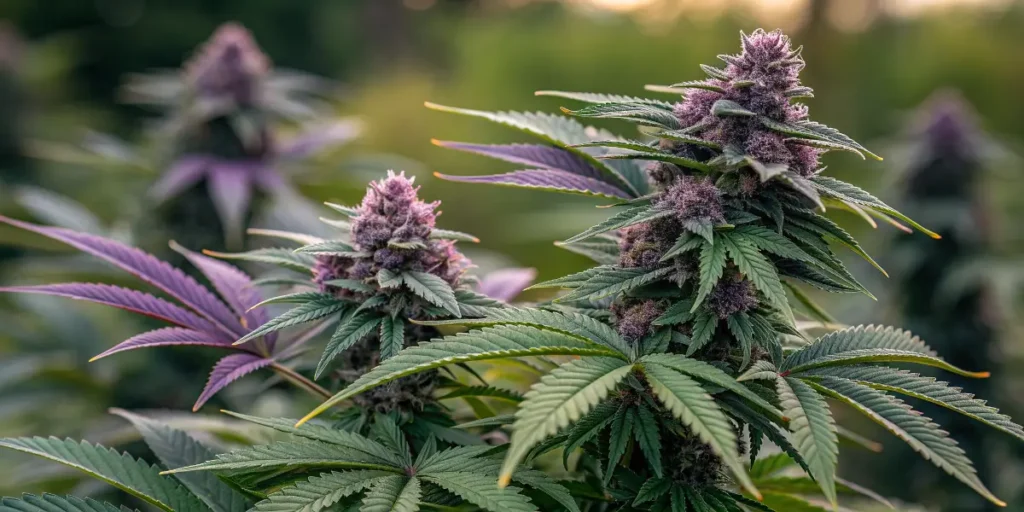
FAQs
What is purple lemonade?
Purple lemonade is a visually striking and flavorful variation of the classic lemonade beverage. It typically gets its unique color from the addition of natural ingredients such as blueberries, blackberries, or even certain edible flowers like lavender or butterfly pea flower. These ingredients not only impart a distinctive hue but also add layers of flavor complexity, elevating the traditional lemon taste with fruity and floral notes.
How do you make purple lemonade?
To make purple lemonade, start by making a traditional lemonade base with lemon juice, water, and sugar. Add a handful of fresh blueberries or blackberries, and blend until smooth. Strain the mixture to remove any pulp or seeds. Alternatively, steep lavender flowers or butterfly pea flowers in hot water to extract the color, and mix this infusion with your lemonade. Adjust sweetness to taste and serve over ice.
What are the health benefits of purple lemonade?
Purple lemonade can offer various health benefits depending on the ingredients used. For instance, if blueberries or blackberries are included, they provide antioxidants, vitamins, and dietary fiber which are beneficial for overall health, improving heart health, and supporting digestion. Furthermore, lemons are rich in vitamin C, which helps boost the immune system, aids digestion, and can improve skin quality.
Can I use artificial coloring to make purple lemonade?
While it is possible to use artificial food coloring to achieve the purple shade in lemonade, it is generally recommended to use natural sources like berries or butterfly pea flowers for a healthier option. Natural ingredients not only enhance the color but also contribute additional nutrients and flavors, making the beverage more wholesome and flavorful. However, if convenience is a priority, a few drops of purple food coloring can be used sparingly.
What other flavors pair well with purple lemonade?
Purple lemonade pairs beautifully with a variety of flavors, enhancing its taste profile. You can add mint leaves for a refreshing herbal note or a hint of ginger for a spicy kick. Cucumber slices can add a cool, fresh layer, while a splash of grape or pomegranate juice can deepen the fruity flavors. Each of these pairings can complement the sweet and tart balance of lemonade, making it more exciting and refreshing.

